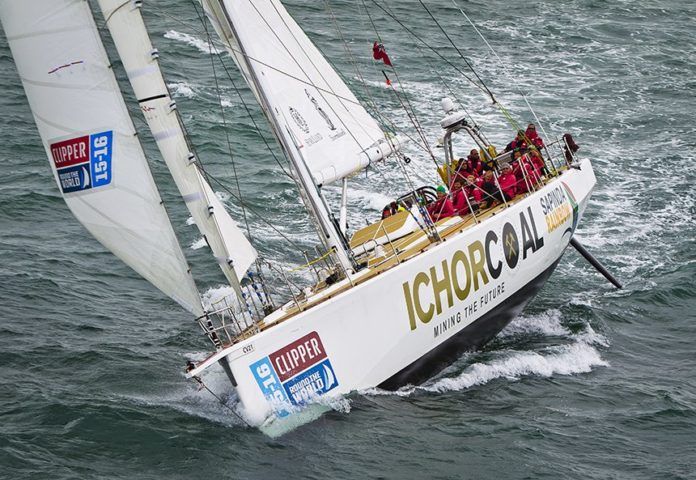Copyright Clipper Around the World Race

Most conclude that football is a contact sport and sailing takes the other tack.But after the amateur crew aboard the 75-foot ocean racer IchorCoal suffered its second fatality in six months, many have suggested that its time to take a closer look at just what went wrong and whats really at stake in pay-to-play big boat ocean racing.
During the very first leg of the current 2015-16 Clipper Race, disaster struck when 49-year-old Andrew Ashman was hit in the head by the mainsheet tackle, knocked unconscious, and died shortly thereafter. Six months later the same crew and boat was heading east on leg number 6, a non-stop 3,000-plus-mile leg stretching from Qingdao, China to Seattle when a breaking sea washed 40-year-old Sarah Young from the cockpit on April 1.The man-overboard recovery effort was impeded by strong winds and heavy seas, but one hour and 17 minutes later the crew finally honed in on Young;s AIS beacon and retrieved her body. After radio consultation with the family and race organizers, the crew carried out a grief-ridden burial at sea.IchorCoal continued eastward toward Seattle and will eventually return to England in July.
Copyright Clipper Around the World Race

This adventure sail event was concieved by Sir Robin Knox-Johnston in 1995, and over the next two decades the race has been run under the auspices of Clipper Ventures with William Ward and Jeremy Knight joining Knox-Johnston as directors. The race was originally a “wrong-way-around” grueling eastward beat to weather in Southern Ocean sailed in stout Pedrick designed Clipper 60s.Next came a fleet of Dubois-designed 68-footers, and this the third fleet of masthead cutters are 75 feet in length and have been designed by Tony Castro.
Over the years, the Clipper fleet has become more performance capable, and with greater speed and an increased sail-area-to-displacement ratio comes additional challenges. Add to this the route reversal and opportunity for powered up off-the-wind sailing in the roaring 40s and one can see the need for able hands on deck. The big controversy however has been the purchase-your-berth format driving the event. Some question whether the participants have the requisite skill to respond to heavy-weather sailing in cold conditions and to the demands of a powerful ocean racer.
Without question, the Clipper Racer should be considered a grueling challenge, but up until now, the stories of drop-outs and discontentment have been downplayed and the multi-stop race around the world might be categorized as an aquatic Everest ascent. But the deaths of Andrews and Young have tipped the scale and its time to at least take a closer look at the risks and rewards of these races.




































